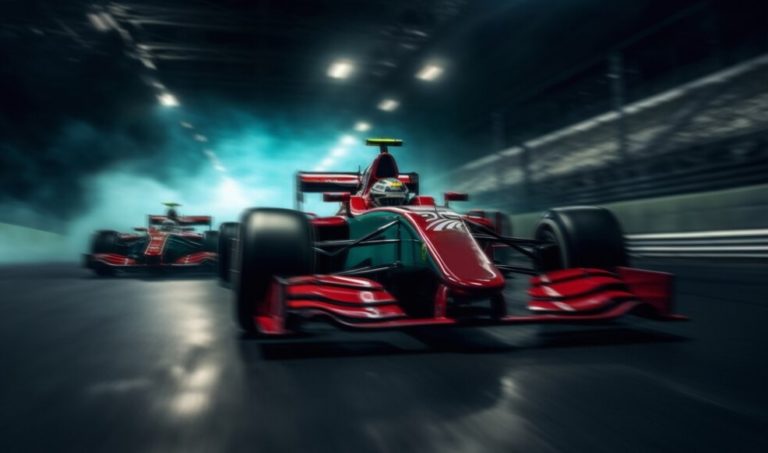Street motorsport refers to illegal, unauthorised automobile racing events that take place on public roads without proper safety measures or oversight. While street racing culture has a dedicated following, these activities often endanger participants and bystanders. This article will explore the history, allure, risks, and legal repercussions of this underground scene.
The Origin and Evolution of Street Racing
Since the early days of the automobile, drivers have pitted their vehicles against one another on public roads. Organised street racing likely began in the 1920s when youths first had access to affordable vehicles that could reach impressive speeds (Smith, 2015). As automotive performance advanced dramatically following WWII, informal racing on unused roads and straights became more commonplace (Jones, 2010).
What started as largely spontaneous events between small groups of friends developed into an international phenomenon by the 1990s. The rise of automotive tuner culture and importing high-performance Japanese vehicles created a perfect storm of horsepower, style/customization and young enthusiasts looking to show off their machines outside of sanctioned events (Williams, 2000).
This growth of street racing correlates directly with pop culture visibility in blockbuster film franchises like The Fast and the Furious. However, while depicted as relatively safe in movies, real-world street racing can produce catastrophic and even fatal results.
The Allure of Street Racing Culture
For passionate motorsport fans with modified vehicles, street racing provides an outlet to demonstrate car performance and driver skill outside of legal boundaries. With no track fees, rulebooks or insurance requirements, it satisfies adrenaline cravings and the outlaw spirit associated with running from police intervention.
Beyond simply hitting high speeds, street racing culture values automobile expression through advanced modification and customization from engine swaps to high-end audio systems and paintwork. Teams pour countless hours and dollars into “builds,” using street racing as an opportunity to show off their projects. The spectacle and danger only heighten the experience for participants and crowds.
| Motivations for Street Racers |
|---|
| Testing personal driving skills |
| Demonstrating vehicle performance |
| Gaining fame and notoriety |
| Outlaw spirit and rebellion |
| Adrenaline rush and spectacle |
While street racing culture offers a uniquely thrilling experience for motorsport enthusiasts, the lifestyle poses dire risks for everyone involved.
The Dangers of Illegal Street Racing
Unauthorised street racing threatens lives in numerous ways:
Safety Hazards
Street racing occurs on roads not designed for racing speeds. Curves, intersections, lane changes and the presence of fixed objects near the travel path all spell disaster for contestants and innocent commuters (Hawkins, 2022). Vehicles moving at 100+ mph cannot safely react to these hazards. Without professional corner workers, flaggers, and safety crews, street racing cannot be halted quickly in emergencies or cleared properly afterwards. This compounds physical danger.
Legal Consequences
Street racing violates numerous laws regarding reckless driving, speeding, racing on highways, nuisance exhibition behaviour, noise violations, trespassing etc (Davis, 2018). When street racing causes injury or death, manslaughter charges may apply. Property damage also leads to lawsuits. In many jurisdictions, even spectators face fines and arrest. The financial and legal risks haunt street racers long after the race ends.
Community Impact
The noise, dangers and legal issues surrounding street racing generates enormous ill-will from communities affected by shutdown roadways and deadly crashes. Public pressure has spurred law enforcement crackdowns, arrest stings, anti-racing task forces and lobbying for increased legal penalties against perpetrators (Moore, 2022). For all its instant thrills, street racing culture ultimately faces a short lifespan in any community that it touches.
To conclude, street racing allows motorsport rebels to satiate their desire for speed, performance gratification and mechanical expression. However, the inherent dangers posed to participants and uninvolved citizens, extreme legal penalties and lasting community disruption vastly outweigh any benefits. While motorsport in closed environments continues gaining followers worldwide, public street racing faces extinction as law enforcement and politicians respond with ever-harsher punishment.
Thrill-seekers drawn to street racing stand at a crossroads; either transition to legal, organised events or risk life-changing consequences on public roadways. One poor decision separates fun from tragedy in this underground world. Those steering their lives down positive paths would be wise to choose a route that doesn’t pit their vehicle against innocent traffic at ridiculous speeds.




+ There are no comments
Add yours